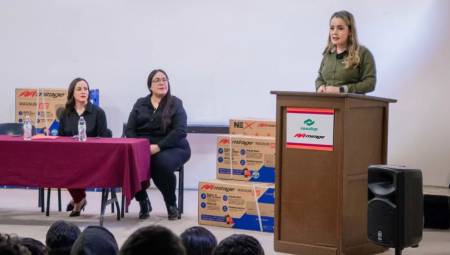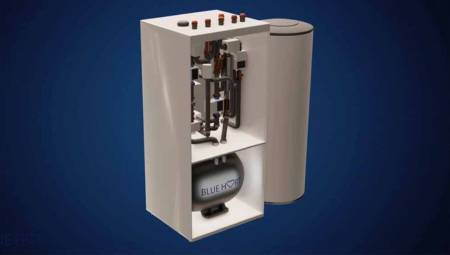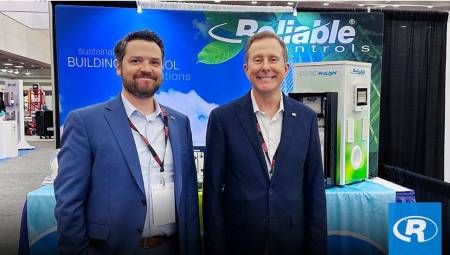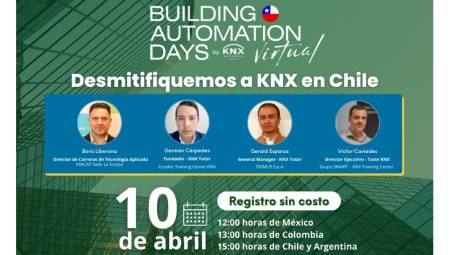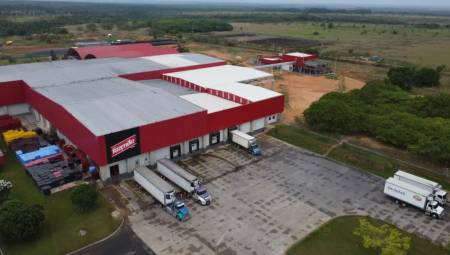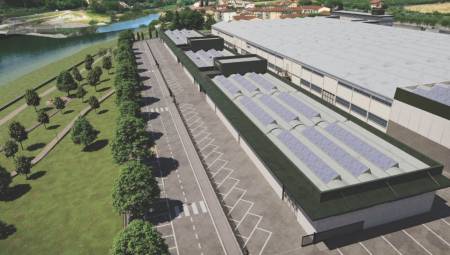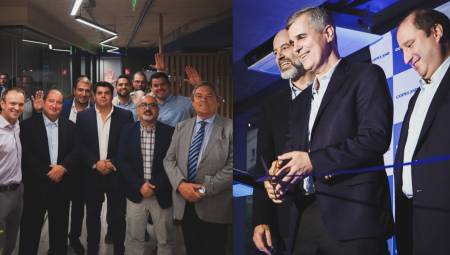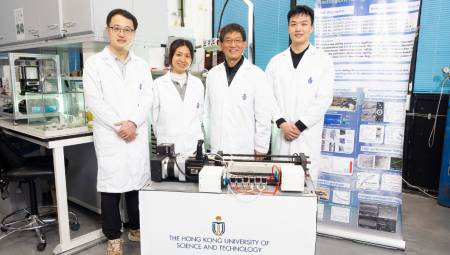 Sound and vibration in the field
Sound and vibration in the fieldKnown as a pressure vibration transmitted through an elastic medium, perceived by the human ear, sound is characterized by the tone or frequency, intensity or force with which it is emitted, point from which its subdivisions depart and lead it to become noise.
rtiz Gomez
This article takes an in-depth tour of sound and its characteristics, presenting images that will serve as an illustration for greater understanding and, taking basic specifications, as a starting point.
 Frequency
Frequency
Its propagation in the air is done in the form of a spherical wave.
The frequency of a sound wave is defined as the number of pulsations it has per unit of time. The corresponding unit is the hertz (Hz).
Decibel. Logarithmic unit of measurement, used in different disciplines of science. In all cases, it is used to compare one quantity with another, called a reference.
Lp = 10 Log P2/Pref
Lw = 10 Log W/Wref
It is one-tenth of the Bel. The Bel is the logarithm in base 10 of the relationship of two powers or intensities; however, this unit is too large, so the use of one-tenth of the Bel has been normalized.
On the logarithmic scale, the limit values are:
Bottom = 0 dB
Superior = 120 dB
Sound measurement
To determine a sound level, a sound pressure measurement is made
The unit of pressure is Pascal:
Lower limit = 0.00002 Pa
Upper limit = 20 Pa
In acoustics, most often the decibel is used to compare the sound pressure in the air, with a reference pressure.
 Typical noise levels
Typical noise levels
The source emits a sound power (Lw).
The listener receives a sound pressure (Lp: pressure exerted by the vibration of the air on the eardrum or membrane of the microphone).
Sound power
Characteristic of the source, which does not depend on the environment or distance
If the sound source emits in all directions, "in free field"
Lw = Lp + 10 Log (4 π r2)
where "r" is the distance between the source and the listener
Table for quick calculations When the difference between two sound levels is Added to the largest level 0 or 1 dB 3 dB 2 or 3 dB 2 dB 4 or 9 dB 1 dB 10 dB or more 0 dBSum of sound levels
The noise resulting from two equal sources is NOT the arithmetic sum of the sound levels of each source
To add two values in decibels you have to make a logarithmic sum or use the following table:
Sound level measurement. To measure the sound level we have the sound level meters. These devices provide us with an indication of the acoustic level of the sound waves that hit the microphone.
Sound level meters IEC 60651 IEC 60804 and IEC 61672
IEC 60651 – Sound level meters (1979, 1993): defines sound level meters in four degrees of accuracy (Types 0, 1, 2 and 3). It specifies characteristics, including directivity, frequency and temporal weighting, and sensitivity to various environments.
IEC 60804 – Integrative sound level meters (1985, 1989, 1993): it is an additional standard to IEC 651 that describes this type of instrument; that is, those who measure Leq.
 IEC 61672 – Sound level meters: this is a new version of the IEC sound level meter standard, which will replace IEC 60651 and IEC 60804. Main changes: tougher specifications, type 3 disappears; it would involve improvements in the quality and testing of instrumentation, as well as an improvement in accuracy.
IEC 61672 – Sound level meters: this is a new version of the IEC sound level meter standard, which will replace IEC 60651 and IEC 60804. Main changes: tougher specifications, type 3 disappears; it would involve improvements in the quality and testing of instrumentation, as well as an improvement in accuracy.
The A scale: the dB(A)
The human ear does not perceive sound pressure levels in the same way at all frequencies, while sound level meters have identical sensitivity.
To bring the sound level meter measurement as close as possible to the actual nuisance that a sound can produce, a weighting of the pressure level is made for certain frequencies
The result obtained shall not be expressed in dB but in dB(A)
In practice, sound levels in ventilation are given in dB(A)
Table 1 Hz 63 125 250 500 1000 2000 4000 dB -26.2 -16.1 -8.6 -3.2 0 1.2 1 -1.1Weights A
Corrections to go from linear dB to dB(A) (See table 1)
At the medium frequencies, the sensitivity is maximum; minor, in the treble and little, in the bass
Types of noise
Continuous noise. It is the one that is produced by machinery that operates in the same way without interruption, for example: fans, pumps and process equipment
Intermittent noise. It occurs when machinery operates in cycles; the noise level increases or decreases rapidly
Impulsive Noise. The noise of impacts or explosions is brief and abrupt, and its effect, surprisingly, causes greater discomfort than expected, from a simple measurement of the sound pressure level.
Free-directivity field
If an acoustic wave is emitted in all directions, without there being any obstacle that opposes its propagation, we will say that it is emitting in a free field.
When the wave is reflected on a part of the volume that surrounds it, then we speak of directivity
Directivity
When the sound power dissipates in a specific direction we have:
Lw = Lp + 10 Log (4 π r2/Q) where "Q" is the directivity factor
Font types
Point source. When the dimensions of a noise source are small compared to the distance to the listener; for example: fans and fireplaces
Linear source. If one source is narrow in one direction and long in the other compared to the distance to the listener, it can be an independent source or it can be composed of many point sources operating simultaneously.
Free field and reverberated field
The area where the sound level decreases when we move away from the source (as in the free field) is called the direct field
The zone where the reverberated sound pressure is equal to or greater than it would be in the free field is called the reverberated field.
Reverberation time
Reverb time (RT) is the time it takes for a signal, since it stops ringing, to dim to a level of 60 dB.
Frequency Hz Curve A dB Curve C dB 63 -26.2 -0.8 125 -16.1 -0.2 250 -8.9 0.0 500 -3.2 0.0 1000 0.0 0.0 2000 1.2 -0.2 4000 1.0 -0.8 8000 -1.1 -3.0 Table 2. Attenuation associated with weighting curves A and C Graph 1. Attenuation associated with weighting curves A, B and C
63 -26.2 -0.8 125 -16.1 -0.2 250 -8.9 0.0 500 -3.2 0.0 1000 0.0 0.0 2000 1.2 -0.2 4000 1.0 -0.8 8000 -1.1 -3.0 Table 2. Attenuation associated with weighting curves A and C Graph 1. Attenuation associated with weighting curves A, B and CAbsorption coefficient of a material
The absorption of a quarter is obtained by adding all the absorption surfaces in the room. The absorption of each surface is the product of the surface area by the absorption coefficient. The absorption coefficient of a material is the relationship between the energy absorbed by the material and the energy reflected by it.
Refraction. It is the change of direction that a wave undergoes when it passes from one medium to another.
Diffraction. It is the distortion of a sound field, caused by the presence of an obstacle, or also a bending by the wavefronts
Reflection. At the limit of two means capable of conducting sound, as is the frequent case of surfaces separating ambient air from solid bodies, both reflection and absorption of energy occur.
Noise through pipes
Due to air movement and turbulence, they are transmitted through the ducts
They can be generated in the ducts themselves when the air velocity exceeds 10 m/s
The pressure energy consumed (pressure loss) is transformed into sound power
 Fan that radiates in an obstacle-free space
Fan that radiates in an obstacle-free space
See the following installation and suppose you want to know Lp at point "A", affected by the noise of fan V, from which we have its sound power at the Lw discharge
The following expression is considered as the basis for the calculation: Lp = Lw – 20 Log r + 10 Log Q – 11
Lp = Lw – 20 Log r + 10 Log Q -11 Q = 2 (Wall Center) r = 3m Δ = -20 Log 3 + 10 Log 2 – 11 = -9.5 + 3 -11 = -17.5 (See table 3) Frequency Hz 63 125 250 500 1000 2000 4000 8000 1 Lw Power Fan 74 73 74 73 72 69 64 58 2 Δ -17.5 -17.5 17.5 17.5 17.5 17.5 17.5 17.5 3 Lp = 1 + 2 56.5 55.5 56.5 55.5 54.5 51.5 46.5 40.5 4 Weighting A -25.5 -15.5 -8.5 -3 0 1 1 -1 5 Lp (A) = 3 + 4 31 40 48 52.5 54.5 52.5 47.5 69.5 Table 3. Total Lp (A) = 10 Log ∑ 10 Lp(A)/10 = 58.9 dB(A)Fan affecting an enclosed area
In this case, on the point "A" studied come the direct sound waves, as in the previous case; but, in addition, those reflected by the walls: reverberant sound
We will divide the calculation into two parts: direct noise, following exactly the steps in the previous section, and reverberant noise, using the following expression:
Reverberant Lp = Lw -10 Log Rc + 6
Rc is the constant of the room that depends on the surface of the walls
S (m2) and the coefficient to the medium of absorption thereof
Calculation of Rc
Hz frequency: 63, 125, 250, 500, 1000, 2000, 4000, 8000
Absorption coefficient α: 0.05, 0.05, 0.1, 0.15, 0.25, 0.3, 0.3, 0.25
Rc = S α/1-α: 5.3, 5.3, 11.1, 17.6, 33.3, 42.9, 42.9, 33.3
Reverberant noise
Hz frequency: 63, 125, 250, 500, 1000, 2000, 4000, 8000
1 Lw (Fan power): 74, 73, 74, 73, 72, 69, 64, 58
2 -10 LogRc + 6: -1.2, -1.2, -4.5, -6.5, -9.2, -10.3, -10.3, -9.2
3 Lp Reverberant 1 + 2: 72.8, 71.8, 69.5, 66.5, 62.8, 58.7, 53.7, 48.8
Total noise
Hz frequency: 63, 125, 250, 500, 1000, 2000, 4000, 8000
4 Lp Direct: 56.5, 55.5, 56.5, 55.5, 54.5, 51.5, 46.5, 40.5
5 Reverberant Lp: 72.8, 71.8, 69.5, 66.5, 62.8, 58.7, 53.7, 48.8
6 Lp Total 10 Log (10 4/10 + 10 5/10): 72.9, 71.9, 69.7, 66.8, 63.4, 59.5, 54.5, 49.4
7 A weighting: -25.5, -15.5, -8.5, -3, 0, 1, 1, -1,
8 Lp (A): 47.4 56.4 61.2 63.8 63.4 60.5 55.5 48.4
Lp (A) Total = 10 Log Σ 10 Lp(A) /10 = 69 dB(A)
NOM-011-STPS-2001. Its objective is to establish the safety and hygiene conditions that are required in the workplaces where noise is generated that, due to its characteristics, levels and time of action, is capable of altering the health of workers; it also establishes the maximum permissible levels and times of exposure, per working day.
Maximum permissible exposure limits NER TMPE 90 dB(A) 8 hours 93 dB(A) 4 hours 96 dB(A) 2 hours 99 dB(A) 1 hour 102 dB(A) 30 minutes 105 dB(A) 15 minutesCalculation for exposure time
When the NER in the workplace is between two of the magnitudes recorded in Table A1(90 and 105 dB(A)), the maximum permissible exposure time should be calculated with the following equation:
TMPE = 8/2^ ((NER -90)/3)
Where:
TMPE = Maximum Permissible Exposure Time
NER = Noise Exposure Level
 NOM-081-ECOL-1994. This standard establishes the maximum permissible limits of noise emission generated by the operation of fixed sources, and the measurement method by which their level emitted into the environment is determined. It is applied in small, medium and large industry (established shops, public or private services, and activities on public roads).
NOM-081-ECOL-1994. This standard establishes the maximum permissible limits of noise emission generated by the operation of fixed sources, and the measurement method by which their level emitted into the environment is determined. It is applied in small, medium and large industry (established shops, public or private services, and activities on public roads).
In Switzerland they use three types of limits:
1 Planning values for new residential, transport or industrial areas
2 Limits on housing due to alterations or new installations
3 Alarm values to identify areas where noise reduction is a priority.
NOM-081-SEMARNAT-1994
The measuring points must be located as close as possible to the outer limits of the property, at a floor height of not less than 1.20 m. If the fixed source is not limited by confinements and there is no way to determine the boundaries of the property, the measuring points must be located 1 m away from it, at a floor height of not less than 1.20 m.
Environmental Standard for the Federal District NADF-005-AMBT-2006. It establishes the maximum permissible limits of sound emissions that must be met by those responsible for emitting sources located in the Federal District.
Object and scope of validity. Establish the specifications of the equipment, conditions and measurement procedure, as well as the maximum permissible limits of noise emissions of those activities or turns that, for their operation, use machinery, equipment, instruments, tools, artifacts or facilities that generate noise emissions to the environment. This rule is applicable to all those issuing sources located in the territory of the Federal District, which are not of Federal competence.
Schedule Maximum permissible limits From 6:00 to 22:00 hrs 65 dB(A) From 22:00 to 6:00 hrs 62 dB(A)Maximum permissible limits. The maximum permissible limits of noise emissions of those activities or turns that, for their operation, require machinery and equipment that generate noise emissions to the environment will be:
Introduction to vibrations
When is it necessary to know the vibration generated by a rotating machine?
In surveillance mode, being clear about the state in which the equipment is located
When a problem already exists and it is required to understand what the situation is and how to solve it
Vibration: is an oscillation where quantity is a parameter that defines the movement of a mechanical system.
Oscillation: is the variation, usually as a function of time, of the magnitude of a quantity, with respect to a specific reference, when the magnitude is alternately greater and less than the reference.
Mechanical parameters and components
Displacement Speed AccelerationParameters associated with vibration and its isolation
Period (T). Unit of measurement: s Frequency (f). Unit of measurement: Hz Pulsation (ω). Unit of measurement: rad/s Elongation. Unit of measurement: m, mm, etc. Amplitude. Higher elongation valueSimple oscillatory movement
If the movement of our example were to be maintained indefinitely, it would be a simple harmonic movement.
Displacement
y(t) = Y sen (wωt)
Velocity
v(t) = ω wY cos (ωt)
Acceleration
a(t) = ω w2Y sen (ωt)
Resonance frequency
ωn = √K/M
fn = 1/2π √K/M
Where:
K = Spring system coefficient (lbf/in, N/m)
M = System mass (lbf-s2/in, kg)
Resonance frequency for a system with 1 degree of freedom
ωn = √g/∂
fn = 1/2π √ g/∂
Associated static deflection
∂ = g/4π2f2n
What is experimental modal analysis? It is the excitation of a structure, by means of an electronic exciter, to determine the forms of movement. This technique is routine in the aerospace industry. The objective of this analysis is to locate the isolates in the most effective places.
 Insulation required in t % Type of fan Installations Axial installation <7.5 kW 90% 70% 7.5 to 40 kW 94% 75%>40 kW 96% 80% Centrifugal <4 kW 90% 40% 4 to 20 kW 96% 80%>20 kW 98% 90%
Insulation required in t % Type of fan Installations Axial installation <7.5 kW 90% 70% 7.5 to 40 kW 94% 75%>40 kW 96% 80% Centrifugal <4 kW 90% 40% 4 to 20 kW 96% 80%>20 kW 98% 90%Introduction to Modal Essays
Current requirements: increase the speed of transport, reduce fuel consumption and make constructions lighter.
Aftermath. Structures become weaker and break, due to dynamic loads. The resonances move to the excitation zones of the system forces.
Applications
Vibration testing Predictive maintenance Vibrations in buildingsHow are vibrations quantified? Input forces + system responses (mobility) = vibration
To perform the analysis, you must first know the types of vibration signals, such as stationary, non-stationary, deterministic, random, continuous and transient. Depending on this, different types of analysis will be carried out.
Types of transducers The transducers, according to their principle of operation, can give an output signal proportional to the displacement, speed or acceleration, and as a consequence of their sensitivity, it will be given in units according to the magnitude under measurement.
Vibration can be expressed in displacement, speed and acceleration. Force transducers are also used.
ANSI/AMCA Standard 204-96 Balance Quality and Vibration Levels for Fans. The purpose of this standard is to define the appropriate roll quality and vibration levels during operation for manufacturers, use and maintenance equipment. Covers fans with rigid rotor, found in commercial heating, ventilation and air conditioning; industrial processes, mine/tunnel ventilation and power generator applications.
Calculation of the permissible residual imbalance ANSI/AMCA Standard 204-96
SI Units
eper = (G/ω)E – 03 = Specific imbalance, μm, mm/Kg
Uper = M* eper = (9.55G*M/N) E-03 = Permissible residual imbalance
(Moment), g mm
ω = 2π N/60, rad/s
Where:
N = Rpm (rotor service speed)
M = Rotor mass, kg
I-P Units
eper = (G/25.4ω)
Specific imbalance, in lb.
Uper = W* eper = (0.376G*W/N) for U in lb in, (6.02G W/N) for U in oz in
ω = 2π N/60, rad/s
Common cases
Misalignment. It is almost as common as imbalance, even if self-aligning bearings or flexible couplings are used.
Eccentricity. It occurs when the center of rotation does not match the geometric center.
Ball bearings. Such movements produce vibrations when there is a defect in the internal tracks of the ball bearings.
Clearances. Normally, they come from loose screws or bearings with too large sets.
Aerodynamic forces. These, in general, do not cause vibrations in the fan, but can generate vibrations in the ducts attached to it.
Friction bearings. They give vibration problems when they have excessive play, are poorly lubricated or have worn out due to lack of maintenance.
Pulleys with section V. Apart from the misalignment and eccentricity problems already mentioned, the bands can cause vibrations, especially when there are several of them in parallel and they are not twinned.
The defects that occur in the bands produce vibrations at frequencies that are multiples of the linear velocity of those; therefore: Hz = 1, 2, 3, or 4 Diam. Pulley* rev/s / Long. Band. On the other hand, the defects normally found in pulleys produce frequencies equal to their rotational speed.
Insulating elements (recommendations for installation)
Typical installation
Distributing loads between insulating elements Stability of the assembly Avoid "mechanical bridges" Set up of the measuring equipment Initial measurement of vibration, which is supposed to be caused by an unknown weight Add known weight and measure the effect Once the effect of the test weight is known, calculate the weight necessary to cancel the imbalance of the rotor Check if the vibration is within the vibration parameters Repeat the process to refine if necessary.Why should we swing flat?
Because it will give us a glimpse of the balancing process, which is important to know, even if you prefer to use other techniques because it is simple and can be obtained with simple tools Because it really works; in many real situations, no other more complex method is necessary Type of fan Static pressure/power (inwg/HP)
Speed (RPM) Base type Insulation type Minimum deflection est. (in) Axial (up to 22 in diameter) All speeds No special base required; the insulation can go straight to the equipment Neoprene anti-vibration heel or frame hanging spring 0.25 in Axial (greater than 24 in diameter) Up to 2 inwg up to 300 rpm No special base required; insulation can go straight to the equipment Free spring or rack hanging spring 2.50 in 300 to 500 rpm 0.75 in 501 rpm onwards 0.75 in 2.1 inwg up to 300 rpm Concrete inertia base Free spring or frame hanging spring 2.50 in 300 at 500 rpm 1.75 in 501 rpm onwards 0.75 in Centrifuges (up to 22 in diameter) All speeds Structural base with steel rails Neoprene anti-vibration heel or frame hanging spring 0.25 in Centrifugal (greater than 24 in diameter) Up to 40 HP up to 300 rpm Structural base with steel rails Free spring or frame hanging spring 2.50 in 300 at 500 rpm 1.75 in 501 rpm onwards 0.75 in Greater than 50 HP up to 300 rpm Concrete inertia base Free spring or frame hanging spring 2.50 in 300 at 500 rpm 1.75 in 501 rpm onwards 1.00 in Propeller fan wall application All powers All speeds No special base required; the insulation can go directly to the equipment Neoprene anti-vibration heel or pads 0.25 in Propeller fan ceiling application All powers All speeds No special base required; the insulation can go directly to the neoprene anti-vibration heel equipment or 0.25 in pads————————————————————————————————-


